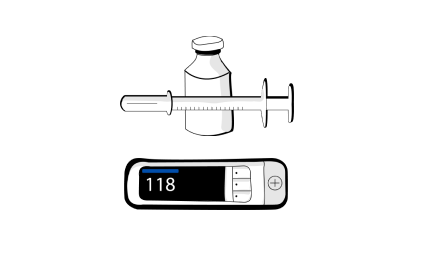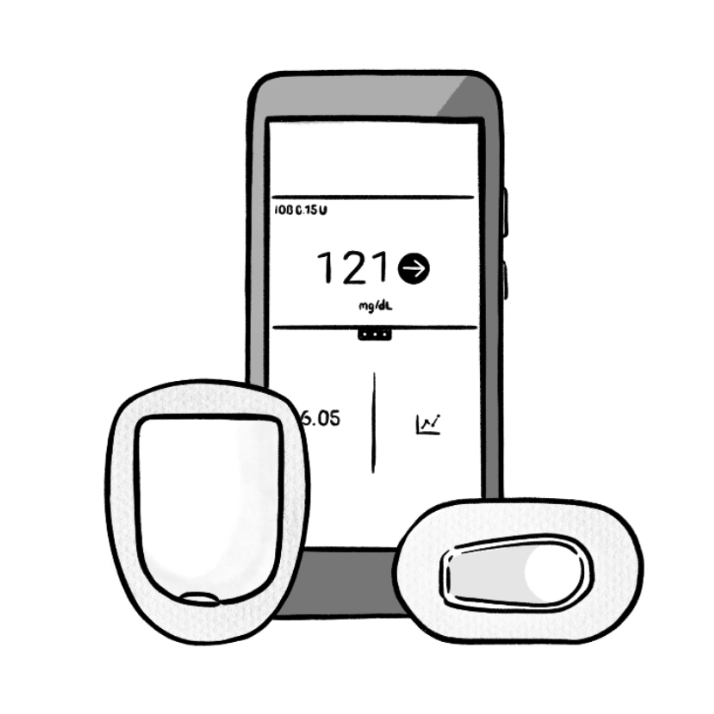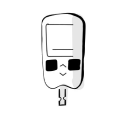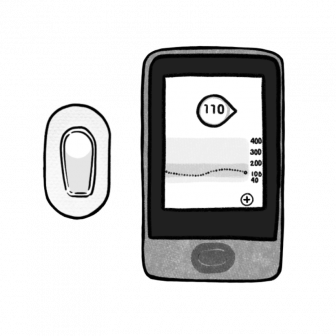Diabetes Device Choices
Overview
Meter & Injections
Meter & Syringe

Practically fail safe. Supplies for this combo are easy to obtain almost anywhere.
Sensor & Smart Pump
Omnipod 5 Smart System

The Omnipod 5 closed-loop system adjusts your basal insulin levels up and down based on predicted glucose levels.
- Omnipod + Dexcom Sensor
Priority: Overall
Next Steps

You're going to do great on the devices you choose
Talk to your provider to get a prescription. Advocate for yourself with a list of reasons why you believe it is best for your lifestyle.
Talk to the device companies about the device you want and if your insurance will cover it. They can help with this.
Many insurance companies require documentation of different qualifications before approving diabetes device coverage. every insurance company is different but some common qualifications include checking your blood sugar 4-6 times per day or having frequent low blood sugars. Understanding what qualifications are necessary for device coverage before starting the approval process can make things a lot easier.
Visit https://diabeteswise.org/resources/getting-treatment/qualify-for-insurance/ for more resources.
Questions for your Doctor
Meter & Syringe
Can I try this before I commit to it?
A lot of provider offices have sample devices you can touch and feel to get a sense of how they work. Some offices even have a trial device you can use for week to see how it works for you.
Omnipod 5 Smart System
How does a smart system work?
Automated insulin delivery systems usually have three parts: a continuous glucose monitor (CGM), an insulin pump, and an algorithm, which is the brain. It makes many dosing decisions for you with less button pushing. The system senses your blood sugar level and adjusts insulin delivery automatically.
Can I try this before I commit to it?
A lot of provider offices have sample devices you can touch and feel to get a sense of how they work. Some offices even have a trial device you can use for week to see how it works for you.
Where can I find information about financial assistance for Omnipod 5?
The Omnipod Financial Assistance Program was created to help cover your Omnipod costs during financial challenges. More information is available on: https://www.omnipod.com/is-omnipod-right-for-me/coverage/financial-assistance. As a general reference: • The majority of Omnipod 5 customers pay $50 or less per month • Over 70% of Omnipod 5 customers pay $50 or less per month • More than a third of Omnipod 5 Customers pay $0 per month • More than half of Omnipod 5 customers pay $1 or less per day • Over 38% of Omnipod 5 customers pay $1 or less per Pod • More than a third of Omnipod 5 customers pay $1 or less per PodQuestions for your insurance
Many insurance companies require documentation of different qualifications before approving diabetes device coverage. Every insurance company is different, but some common qualifications include checking your blood sugar 4-6 times per day or having frequent low blood sugars. Understanding what qualifications are necessary for device coverage before starting the approval process can make things a lot easier.
Talk to the device companies
Meter
Because there are so many options, and they don't have huge differences - the best thing to do is see what options your insurance companies will cover. The best way to find that out is through your doctor.
WalgreensSyringe and Vial
Understand your cost at your local pharmacy.
Insulin Cost OverviewDexcom G6
Call Dexcom and ask them about your coverage. Talk to your Doctor to get a prescription.
1-888-738 3646 Dexcom WebsiteOmnipod
Call Omnipod and ask them about your coverage. Talk to your Doctor to get a prescription.
1-800-591-3455 Omnipod WebsiteAdditional Resources
By Priorities
 Active Lifestyle
Active Lifestyle
 Avoiding Highs and Lows
Avoiding Highs and Lows
 Comfort
Comfort
 Easy Insulin Dosing
Easy Insulin Dosing
 Easy to Use
Easy to Use
 Fewer Fingersticks
Fewer Fingersticks
 Privacy
Privacy
Cost & Coverage
Meter

Dexcom G6

Glucose Testing Supplies
Meter & Fingerpricker (1 time purchase)
Strips & Supplies
Sensors
Transmitter
Receiver (1 time purchase)
Glucose Testing Cost Estimate
Startup $0 to $60
Monthly $100
There are lots of different meters out there. It's worth seeing which are covered by insurance - they will cover some of the cost of the strips. Often your doctor can give you a meter for free, worth asking.
Startup $80 to $239
Monthly $35 to $105
These prices vary by Insurance. Many insurers support the G6 Dexcom. It may be covered under durable medical goods or a pharmacy benefit.
Syringe and Vial

Omnipod

Insulin Dosing Supplies
Syringe ~$30 (Monthly)
Insulin $5 to $500 (Monthly)
Pods
Reader
Insulin
Insulin Dosing Cost Estimate
The total amount depends hugely on how much insulin you use and what your insurance covers.
Startup $5 to $1260 Monthly
Omnipod is now covered by Medicare and Medicaid as well as most private insurers.



